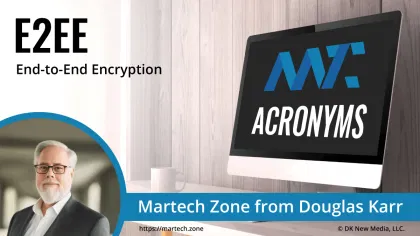
A method of securing digital communication so that only the intended sender and recipient can read the content of a message. In an E2EE system, data is encrypted on the sender’s device and remains encrypted while it travels across the internet, only being decrypted on the recipient’s device. This ensures that intermediaries—such as service providers, hackers, or even government entities—cannot access the message content in transit or stored on a server.
E2EE has become a foundational technology in privacy-centric communication platforms, offering users the confidence that unauthorized third parties cannot intercept or tamper with their data.
How E2EE Works
In an E2EE system, each user has a unique set of cryptographic keys:
- Public key: Shared with others so they can encrypt messages to that user.
- Private key: Kept secret on the user’s device and used to decrypt incoming messages.
When a message is sent, it’s encrypted using the recipient’s public key. Only their private key can decrypt it. This encryption process happens automatically and invisibly to the user in most modern applications.
Notably, even the service provider facilitating the communication (such as a messaging app or cloud service) cannot access the plaintext data because they do not hold the private keys.
Common Use Cases
E2EE is widely used in applications where privacy and data security are paramount. Examples include:
- Messaging apps: Platforms like Signal, WhatsApp, and iMessage use E2EE to protect chat content from being accessed by anyone other than the participants.
- File storage and sharing: Services such as Proton Drive and Tresorit offer E2EE to ensure that documents stored in the cloud remain private.
- Email and collaboration: Tools like ProtonMail and Tutanota bring E2EE to email communications, while some enterprise platforms integrate E2EE into document collaboration features.
- Voice and video calls: Secure conferencing tools employ E2EE to protect audio and video streams during live calls.
E2EE vs. Other Encryption Models
Not all encrypted services use end-to-end encryption. Some platforms encrypt data in transit and at rest but retain the ability to decrypt it on their servers. This is often referred to as transport encryption or server-side encryption.
The key difference is control: in a non-E2EE system, the service provider can access the encryption keys and view or disclose your data. In an E2EE system, only the sender and receiver can decrypt the content, ensuring true privacy.
Business Implications of E2EE
For organizations, adopting or supporting E2EE can offer several benefits and challenges:
Benefits
- Enhanced trust and privacy: E2EE shows customers that their data is protected, strengthening brand reputation.
- Regulatory compliance: Strong encryption helps meet data protection laws such as GDPR or HIPAA in some industries.
- Protection against breaches: Even if servers are compromised, encrypted data remains unreadable.
Challenges
- Limited access for administrators: With E2EE, even internal teams can’t access encrypted data, complicating support, moderation, or legal compliance.
- Complexity in implementation: Properly managing keys and maintaining usability can be technically demanding.
End-to-End Encryption is no longer a niche feature—it’s a critical standard in modern digital communication. For users, it offers peace of mind. For businesses, it’s a strategic commitment to privacy, security, and digital trust. As cyber threats and data privacy concerns continue to rise, E2EE will remain central to the architecture of secure online services.